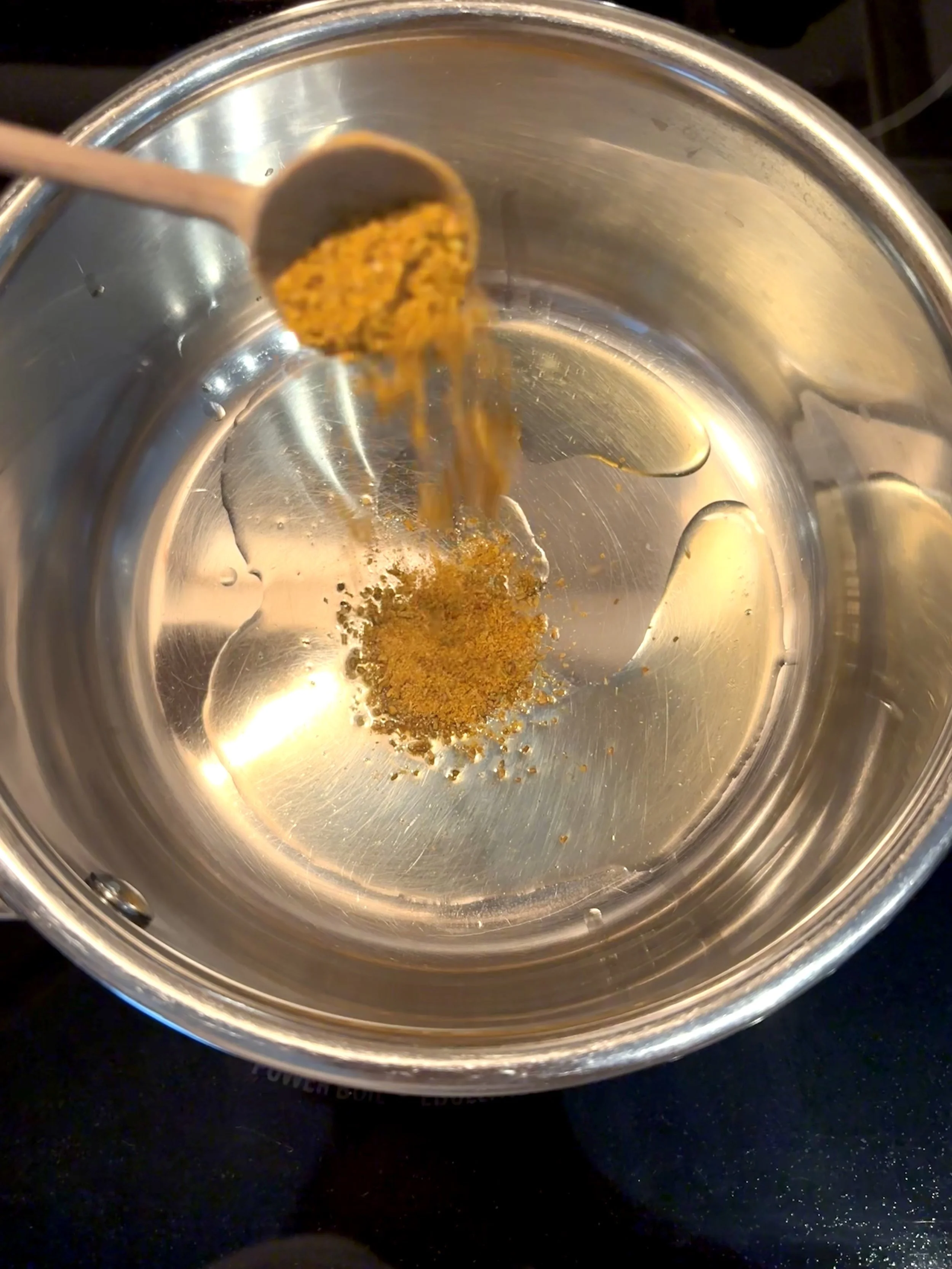Four Spices for Digestion
Hi I’m Evangeline! Welcome to my blog. I am mom and lover of all things health and wellness. By profession- a Registered Massage Therapist and Yoga & Ayurveda consultant. I started this blog back in the early days of Covid19 as a way to stay in touch with my clients, and it’s grown into a space to share what I love most. Here you’ll find health tips and nourishing recipes I make for my family, sprinkled with Ayurveda and Yoga wisdom. My hope is that these posts inspire you to care for yourself in small, joyful ways and feel a little more balanced in everyday life.
"Let food be thy medicine and medicine be thy food."
—Hippocrates
Food has always been a cornerstone of health, a truth known not only in modern nutrition but for thousands of years in Ayurveda, India’s ancient health science. In Ayurveda, both food and spices are understood not just for their taste or nutrient content, but for their therapeutic qualities.
Spices are potent—both as flavor enhancers and as natural supports for digestion, circulation, elimination, and vitality. Unlike herbs, which are typically the leaves of a plant, spices come from seeds, roots, or bark. In Ayurvedic cooking, spices are used with great purpose and care.
This particular spice blend was shared by my Ayurvedic teacher, Vaidya R.K. Mishra, a renowned Ayurvedic physician and herbal formulator, who was born into a family of Ayurvedic doctors dating back thousands of years. He emphasized individualized care, including personalized spice blends and teas. In this spirit, the following spice mix—often coined as 1166 mix with SV Ayurveda practitioners, offers general digestive support and is safe for most constitutions.
Vaidya Mishra’s Spice Mix Recipe
6 tsp fennel seeds
6 tsp coriander seeds
1 tsp cumin seeds
1 tsp turmeric powder
Grind fennel, coriander, and cumin seeds. Add turmeric powder and mix well. Store in a glass container away from sunlight. Keeps fresh 4–6 weeks. Use non-irradiated, organic seeds for best quality.
How to Use
Add the spice mix to ghee or olive oil on medium-low heat before cooking vegetables, grains, or proteins. If you are travelling, sprinkle some on already cooked food, but make a batch with lightly toasting the seeds first, then grind, and store.
If you're new to spices, start with just a pinch or two.
Four Spices for Digestion and their Benefits
Fennel Seeds
– Cooling and balancing for all doshas
– Enhances digestion without overheating
– Supports healthy estrogen levels
– Chew after meals: ½ raw + ½ toasted
Coriander Seeds
– Naturally cooling and alkalizing
– Aids in flushing out toxins and heavy metals
Cumin Seeds
– Stimulates digestive enzymes
– Improves nutrient absorption and assimilation
Turmeric
– Strongly heating and cleansing
– Anti-inflammatory, liver-supportive, and blood-purifying
– Use only in cooking (not teas or capsules)
– Always combine with fat (like ghee or olive oil) for proper liver delivery
⚠️ Note: Always consult your healthcare provider before adding new herbs or spices, especially if you have a medical condition or take medications.
Ayurveda & Lifestyle
According to Ayurveda, true wellness comes from balancing food, sleep, and daily routine—known as the three sub-pillars of life. The main pillar is prana, as taught in Shaka Vansiya Ayurveda (SV Ayurveda or SVA). These practices align us with the rhythms of nature, which modern medicine is now recognizing as "lifestyle medicine."
Food nourishes the seven tissue layers and builds ojas—the subtle essence produced after food has nourished the body. Ojas equates to the neurotransmitters and hormones as described by SV Ayurveda, in addition to immunity, vitality, resilience and stamina. Proper sleep rejuvenates, while a steady routine anchors the nervous system and promotes harmony and balance with the rhythms and cycles of nature.
While Ayurveda is vast, you can start small. Spices are a powerful first step. They awaken digestion, bring clarity to the mind, and add life to your meals.
References
Vaidya R. K. Mishra- Notes from Shaka Vansiya Ayurveda Courses, Practicum, Conferences and Lectures 2003-2015

